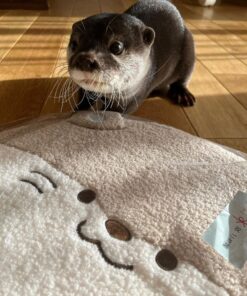Kenyan Sand Boa for sale | Best 1 Python For Sale
$149.00
Buy Striped Kenyan Sand Boa | Best 1 Python For Sale | Striped Kenyan Sand Boa for sale | Python For Sale | Buy Python Online
Kenyan Sand Boa For Sale: A Complete Guide for Prospective Owners
Kenyan sand boa . If you’re thinking about adding a unique and low-maintenance reptile to your collection, the Kenyan sand is an excellent choice. Known for their small size, gentle temperament, and distinctive burrowing habits, these snakes are perfect for beginner and experienced reptile owners alike. In this guide, we’ll walk you through everything you need to know, from Kenyan boa care to finding one for sale and their typical size.
What Is a Kenyan Sand Boa?
The Kenyan sand (Eryx colubrinus) is a small, non-venomous snake native to the sandy deserts and semi-arid regions of northeastern Africa, particularly Kenya. They belong to the boa family, known for their thick, muscular bodies and unique ability to constrict prey. Unlike other boas that climb trees or swim, Kenyan sand boas are ground-dwellers, spending much of their time burrowed under sand or loose soil.
Their burrowing behavior helps them evade predators and ambush their prey in the wild, which primarily consists of small rodents and lizards. Their stocky bodies and short heads make them unique compared to other slender, more agile snakes, but their gentle disposition and easy care requirements make them a fantastic choice for anyone looking to buy a Kenyan boa.
Why Boas Make Great Pets
There are plenty of reasons Kenyan sand boas have become so popular in the exotic pet world. If you’re considering a Kenyan sand boa for sale, here are a few things that make them stand out:
1. **Easygoing Nature**: Kenyan sand boas are known for being docile and easy to handle. While they may be shy at first, they usually tolerate handling quite well and rarely bite, making them perfect for beginners.
2. **Low Maintenance**: These snakes don’t need large, elaborate enclosures or particularly high-maintenance care routines. With the right setup, you’ll find that Kenyan sand boas are one of the easiest reptiles to care for.
3. **Manageable Size**: Kenyan sand boas remain small throughout their lives, making them easier to handle and care for than larger snake species like pythons or other boas.
4. **Variety of Colors**: While their natural coloration is an earthy mix of brown, orange, and yellow, Kenyan sand boas also come in a range of morphs, giving you plenty of options if you’re interested in a particular look.
Finding a Kenyan Sand Boa for Sale
When you’re ready to buy a Kenyan sand boa, it’s important to find a reputable breeder or store to ensure you’re getting a healthy snake. Here’s where to start your search:
1. **Reputable Breeders**: Many breeders specialize in Kenyan sand boas and can offer a variety of morphs and colors. Be sure to ask about the snake’s health, age, and breeding history before making a purchase.
2. **Exotic Pet Stores**: Some stores that specialize in reptiles will have Kenyan sand boas available. Always inspect the conditions in which the snakes are kept to ensure they are receiving proper care.
3. **Online Reptile Marketplaces**: Online reptile stores often list Kenyan sand boas for sale. It’s important to read reviews and verify the reputation of the seller to avoid any potential issues with the health of the snake or shipping conditions.
Kenyan Sand Boa Size: What to Expect
One of the reasons Kenyan sand boas are so popular as pets is their small, manageable size. Unlike some other species of boas that can grow to intimidating lengths, these snakes remain relatively compact throughout their lives.
– **Adult Size**: Kenyan sand boas typically grow to be 1.5 to 2 feet long, with females being significantly larger than males. Females can reach up to 3 feet in length, while males tend to stay closer to 1.5 feet.
– **Body Weight**: These snakes are naturally thick-bodied, with adults weighing between 100 and 400 grams depending on their diet and health.
– **Growth Rate**: Kenyan sand boas grow slowly, often taking 3 to 4 years to reach full adult size. This gradual growth makes them a good option for pet owners who may not be ready to care for a rapidly growing reptile.
Common Health Issues in Kenyan Sand Boas
Kenyan sand boas are generally healthy snakes, but like all reptiles, they can experience health issues if their care isn’t up to par. Here are a few common concerns:
1. **Respiratory Infections**: These can occur if the enclosure is too humid or cold. Symptoms include wheezing, open-mouth breathing, and lethargy. Always maintain proper temperatures and low humidity to avoid respiratory problems.
2. **Shedding Problems**: If your snake has difficulty shedding its skin, it may indicate that the humidity is too low. While these snakes prefer a dry environment, providing a small humid hide during shedding periods can help.
3. **Mites**: Regularly check your snake for mites, which can appear as small black or red spots. Mites can be treated with reptile-safe sprays, but keeping the enclosure clean and well-maintained is the best prevention.
Is a Kenyan Sand Boa Right for You?
With their small size, simple care needs, and calm nature, Kenyan make excellent pets for those interested in reptiles. Whether you’re a beginner looking for an easy-to-care-for snake or an experienced owner wanting a unique addition to your collection, these boas can be a wonderful choice.
If you’re ready to make a Kenyan part of your home, start by searching for a reputable breeder or pet store that has Kenya. With the right care and attention, your new pet will thrive and provide you with years of enjoyment.
In summary, the Kenyan sand is a fascinating and easy-to-care-for species that’s perfect for reptile enthusiasts of all experience levels. By following this guide and providing the right environment, you’ll be well on your way to raising a healthy and happy Kenyan.
Be the first to review “Kenyan Sand Boa for sale | Best 1 Python For Sale” Cancel reply
Related products
ASIAN OTTER FOR SALE
ASIAN OTTER FOR SALE
Baby otters for sale, puppy otter for sale, where to buy otters
ASIAN OTTER FOR SALE












Reviews
There are no reviews yet.